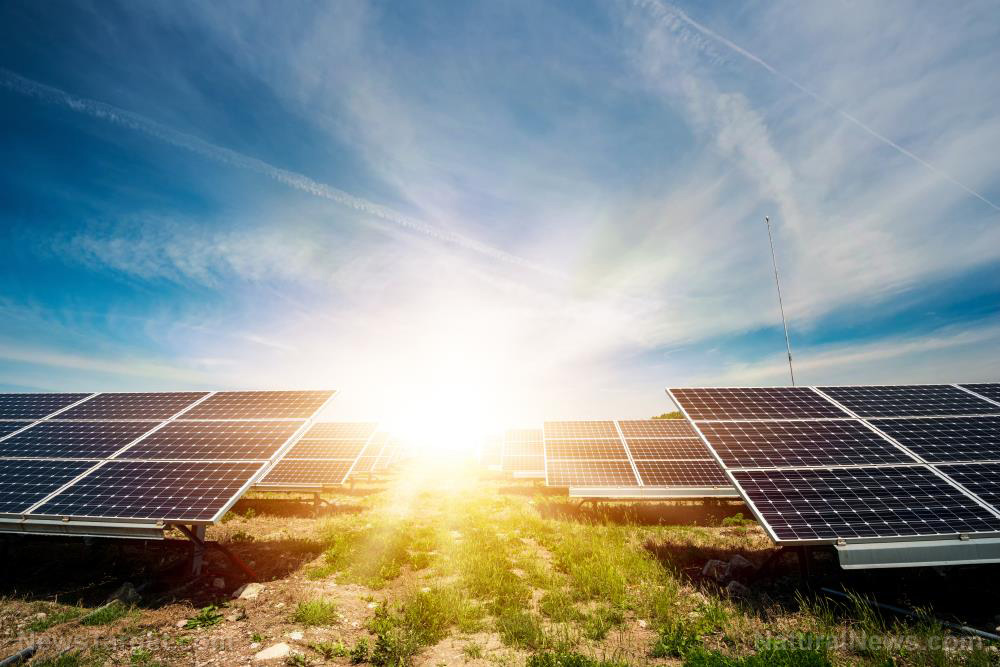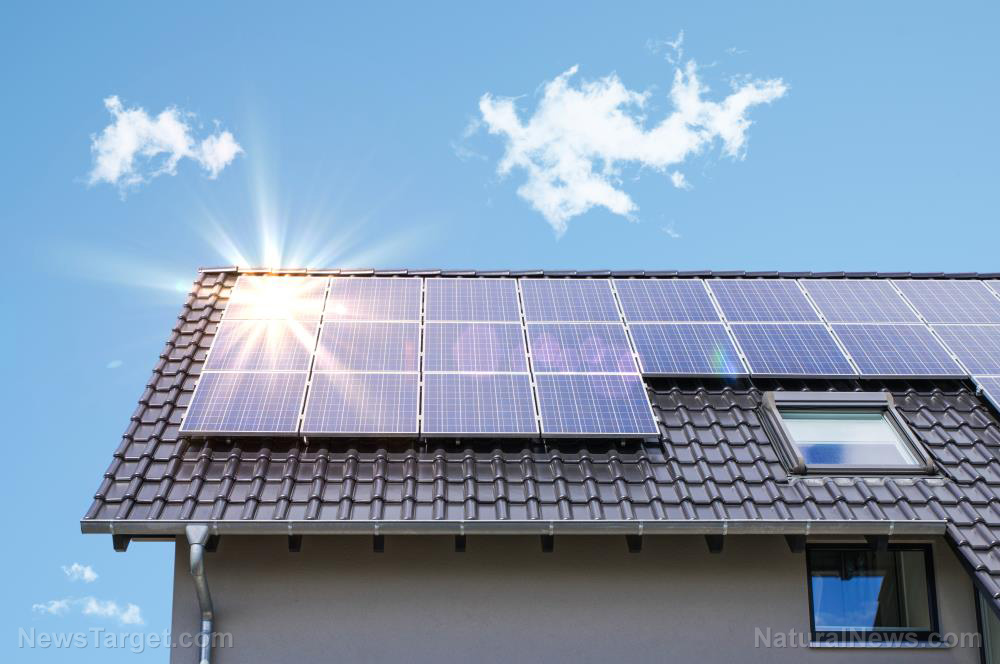Installing solar panels on farmland could change how we generate power and produce food
04/21/2021 / By Divina Ramirez

Harnessing massive amounts of clean and renewable solar power requires land. To note, the push for solar power has been met with opposition in some places, with farmers and environmentalists fighting to preserve farmlands than convert them into sprawling solar power stations.
But it doesn’t have to be just one or the other. According to Greg Barron-Gafford, a researcher at the University of Arizona, a solution exists in agrivoltaics.
Agrivoltaics refers to the practice of planting crops under the shade of solar panels. Though still quite the novel farming practice, agrivoltaics has shown tremendous potential when it comes to producing food and generating clean energy efficiently. In fact, Barron-Gafford and his team have been looking at agrivoltaics as a solution for this dilemma for the better part of the decade.
Surprising benefits of agrivoltaic systems
Barron-Gafford oversees a small garden at Biosphere 2, a research facility in Oracle, Arizona. He began looking into agrivoltaics after he noticed that heat collected beneath solar panels, making them less efficient. (Related: New highly efficient thin-film solar cell generates more energy than typical solar panels.)
He surmised that growing plants under the panels would cool them because plants “exhale” water via a process called transpiration. During transpiration, plants release water in the form of vapor through their pores as they intake carbon dioxide.
True enough, growing plants under the solar panels had a cooling effect. In 2019, Barron-Gafford designed test plots and grew jalapenos, cherry tomatoes and chiltepines, a wild variety of chili pepper native to North America. He found that agrivoltaic panels helped the crops grow because of the shade they cast.
Water remains wet longer in the shade than out in the sun. The same goes for plants grown under panels. They would retain more water in the shade than plants grown under the sun. Therefore, they would need far less water to grow.
Furthermore, Barron-Gafford found that the agrivoltaic solar panels produced three percent more energy from May through June than panels on conventional solar farms. The panels also produced one percent more energy overall than those on conventional solar farms.
Additionally, the shade that the agrivoltaic solar panels cast conferred another major benefit. It helped crops grow more evenly. Because the shade from the panels keeps moisture in the ground longer, the plants underneath are less stressed and they can keep photosynthesizing at a more even rate throughout the day.
Barron-Gafford also found that tomato production doubled under the solar panels, with 65 percent more water efficiency. Chiltepin production also tripled. And although jalapeno production was static, the shade that the panels cast improved the jalapeno plants’ water efficiency by 157 percent.
Possible challenges
Though promising, agrivoltaics presents its own set of unique challenges. For starters, agrivoltaics is extremely site-specific. This means that what works in Arizona might not work in the Pacific Northwest, said Jordan Macknick, an analyst for the National Renewable Energy Laboratory (NREL) in Longmont, Colorado.
Macknick has been working with the NREL since 2010 to understand what grows under solar panels, why they grow under solar panels and where they grow best when under solar panels. He now studies data from 25 agrivoltaic sites, including the small outdoor plot that Barron-Gafford oversees at Biosphere 2.
There is also the question of farming logistics. For instance, crops that need aerial spraying, such as cotton, are not likely to thrive in agrivoltaic systems. Rain may also run from the solar panels and cause erosion. Solar panels installed on low platforms could also obstruct farm vehicles. And even if the panels are installed on high platforms, dust from passing vehicles can swirl up onto the panels, accumulate there and affect efficiency.
Solar panels don’t come cheap either. The upfront costs of installing panels would be enormous for traditional farms. Nonetheless, Barron-Gafford and other proponents of agrivoltaics are hopeful that the costs can be offset by financial incentives from the government.
Follow FutureTech.news for more articles about agrivoltaics and other innovations.
Sources include:
Tagged Under: agriculture, agrivoltaics, environment, food science, future science, renewable energy, science and technology, solar energy, solar power, sustainable living
RECENT NEWS & ARTICLES
PowerGrid.News is a fact-based public education website published by Power Grid News Features, LLC.
All content copyright © 2018 by Power Grid News Features, LLC.
Contact Us with Tips or Corrections
All trademarks, registered trademarks and servicemarks mentioned on this site are the property of their respective owners.



















